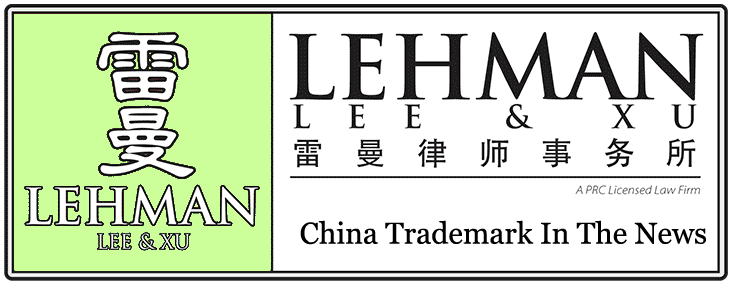China doesn’t recognize trademarks registered in other countries. Companies that register first in China get the trademark—and unscrupulous operators often register a brand, then sell it back to its legitimate owner.
A 2014 business confidence survey by the European Chamber of Commerce found that nearly one out of four European companies consider intellectual property protection to be one of the top three business challenges in China. With piracy and copycatting of famous and not-so-famous brands an ever-present problem, companies with operations in the PRC as well as those thinking of selling to Chinese consumers through e-commerce marketplaces such as Tmall.com, need to take steps to protect their trademarks.
Trademarks are brands or names, usually in the form of words and logos, that companies use as unique identifiers for their products and organization. Alizila spoke with Catherine Zheng, a partner at the Hong Kong-based Deacons law firm and an expert in Chinese trademark law, about the steps that SMEs can take to guard this valuable intellectual property when operating in China. Here’s what you need to know:
WHY YOU NEED TO REGISTER YOUR TRADEMARK IN CHINA. It’s not unusual for Western SMEs to believe that because they have registered their trademark in their home country their intellectual property will be honored in other countries.
This is incorrect. Chinese companies and authorities—crucially, courts and China’s State Administration for Industry and Commerce, the country’s commercial regulatory body—do not recognize overseas registrations and are bound to follow Chinese law when determining who has rights to a name or logo. No matter how egregious the IP violation, you will be virtually powerless in China to get justice unless you have secured Chinese registration for your trademark through the China Trademark Office (CTMO).
WHY YOU NEED TO REGISTER YOUR TRADEMARK IN CHINA YESTERDAY. In trademark legalese, China is a “first to file” country, which means the CTMO generally awards registration for a specific trademark in a specific product category to whomever files for it first—regardless of whether the trademark truly belongs to the filer. This rule, while expedient, makes things easier for China’s numerous trademark hijackers to swoop in on unsuspecting companies entering the PRC market, gaining registration before the legitimate owner in order to sell the brand back to them.
An amendment to the country’s trademark law enacted earlier this year requires that all applications follow principles of honesty and good faith, but so far it’s unclear what impact this will have on these shake-down artists. Zheng says that if a trademark squatter has registered your logo ahead of you “there could be infringement actions against you if you try to enter the market, which will actually stop you from doing business in China.” Even if you don’t plan to sell your product in China but have it manufactured there, there is a risk that a squatter could block the export of your merchandise. “It’s always costly trying to regain a trademark that has been taken by others,” Zheng says.
Now that you know why you need to register your trademark in China, here are five steps to get 'er done:
STEP 1) YOU ARE GOING TO NEED A LAWYER. Although the PRC’s new trademark law provides for e-filing, this is not yet an option for foreign companies. So even if you read and write Chinese, you’ll need to hire legal representation and/or one of China’s thousands of trademark agencies to represent you in the registration process. Zheng says U.S. companies often have their regular company counsels help them find and engage a lawyer in Hong Kong or the mainland. Companies can also hire a PRC agency to secure their registration. The CTMO keeps a list of such agencies, but it’s best to get a referral from someone you trust.
STEP 2) RESEARCH. “Once a client has shown us their brand or logo, the first thing I would suggest is to do a search against the trademark office database to see if the same or similar marks are available or if they have been taken by others,” Zheng says. A thorough background check can determine where you stand and how to proceed.
STEP 3) HERE COMES THE PAPERWORK. If no one else has spoken for your trademark, the next step is to decide whether to register your English-language logo or brand, and/or create a separate logo or brand using Chinese characters. Registering separate versions of English and Chinese logos or brands “offers broader protections and flexibility,” Zheng says. Once this is decided, companies must furnish agents with the appropriate corporate documents to prove they are who they say they are, along with power of attorney giving the agent the right to act on their behalf with the CTMO.
STEP 4) PICK A CLASSIFICATION. You can’t just register your logo or brand and expect it to be valid for any and all products you intend to make or sell in China. Registration is product specific. China follows the World Intellectual Property Organization’s Nice classification, which lays out 45 classes of goods and services.
Here’s where it gets weird: in China, there are also sub-classes for those 45 classes—and China generally allows the same or similar logos to co-exist in different classes and sub-classes. For example, if you have registered your necktie brand only in the “ties” subcategory, someone else can legally grab your brand and register it for the sale of clothing. Other countries don’t allow this to avoid consumer confusion.
To protect yourself, you’ll need to file for categories to cover every product you sell or intend to sell in the next three years (protection expires after three years if you don’t actually use a logo in a sub-class). “It’s a common strategy to block the sub-classes to prevent someone else from registering the same or similar mark,” Zheng says.
STEP 5) APPROVAL OR DENIAL. If everything goes smoothly, and there are no conflicting registrations of similar marks, the CTMO will publish your mark and allow three months for anyone to formally oppose registration. If there is no opposition, you’ll proceed to registration, and in another four months or so you will receive a registration certificate.
If CTMO examiners find a deficiency in your application or if there are prior similar marks blocking your application, companies can file for a review with the Trademark Review and Adjudication Board (TRAB). An uncontested registration can take between nine months to 1.5 years to complete, Zheng says, and the cost will be $500 to $1,000. If you run into opposition, the cost can easily double, but there are a lot of variables depending upon the unique circumstances surrounding specific trademarks. In particular, “getting a squatter off your brand could be really expensive and depends on what strategy you take,” Zheng says.
Will a registered trademark actually be useful in preventing or stopping infringement? Zheng says yes. If you run into an imposter, you can file a complaint with the State Administration for Industry and Commerce, which is “quite responsive” and can fine offenders, confiscate goods, and acting in concert with police can even take criminal action against the worst violators, who face imprisonment and hefty fines. You can also enlist the PRC customs officials to stop the import and export of infringing goods.
Finally, you can file a lawsuit in one of the country’s local courts; win your case and you may be entitled to damages. Although it can take years to resolve lawsuits, Western companies can get a fair shake in Chinese courts, Zheng says. “Of course you can run into local protectionism in small cities where the whole place is one family or working for the same company,” she says. But “my personal experience is that courts in the big cities are generally fair. Even in cases where there are complicating political or economic issues, judges assist the sides to reach an agreeable settlement. It’s not always as bad as people think.”
Website:http://www.internetretailer.com/2014/09/17/why-western-brands-should-register-trademarks-chinanow |


